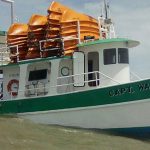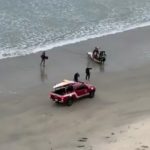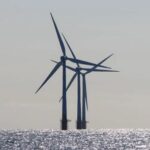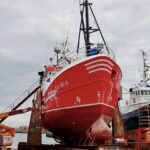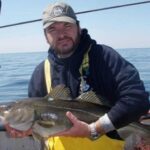Tag Archives: Pinnipeds
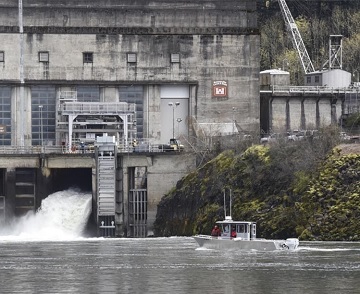
Sea lions threaten Northwest’s salmon – Pinnipeds eating thousands of at-risk fish in Columbia River
Decadeslong efforts by state and tribal agencies have slowly curbed sea lion populations in the region, yet officials still consider the pinnipeds a threat to at-risk salmon populations in the Columbia River. Between August 2021 and May 2022, officials estimate, more than 7,000 fish in the Bonneville Dam tailrace were killed by Columbia River sea lions, according to the Portland U.S. Army Corps of Engineers’ 2022 predation report. This totals about 12.4% of the salmon run accounted for during the agency’s observation period. Dozens of sea lions congregate at the dam in the fall, winter and spring. They feast on chinook, steelhead and coho salmon, as well as sturgeon and other fish. Spring chinook salmon were disproportionately affected, accounting for roughly 4,400 of the 7,000 fish killed. >click to read< 07:55

Sea lions, seals might be hampering WA salmon recovery. What can be done?
State officials are now exploring whether to kill sea lions and seals in the Salish Sea and outer coast in a desperate effort to save salmon species from extinction. A new report commissioned by the state Legislature and completed by the Washington Academy of the Sciences says seals and sea lions are likely impeding salmon recovery, and the full impacts of predation on salmon may not be fully understood without lethal intervention. Three mammals specifically have skyrocketed. From 1975 to 2015, the harbor seal population in the Salish Sea exploded from about 6,000 to around 50,000. And California sea lions rose from 50,000 to somewhere around 300,000 on the West Coast of the U.S., according to the Northwest Indian Fisheries Commission. Populations of Steller’s sea lions living around Washington, Oregon and California steadily rose from an estimated 15,000 in 1982 to more than 43,000 in 2019. >click to read< 09:14
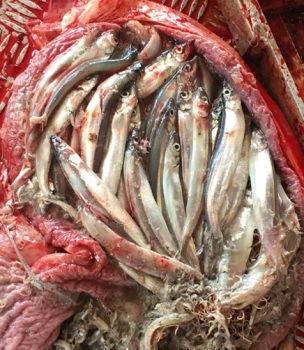
5 miles of seals: Newfoundland fisherman’s video fires up more debate about pinnipeds
Fisherman Jason Branton was steaming home after a crab fishing trip a week ago when he saw something he’d never witnessed before. The 45-ft longliner Gracie’s Adventure was about 60 miles out from Baccalieu Island, in Trinity Bay, on May 30 when Branton and the crew noticed seals all around them. They had encountered a large herd of seals, a patch about five miles wide,, adding this is also the time when capelin begin migrating inshore. Branton and his crew rely mainly on crab, capelin and cod for their fishing income. The question of the impact of seals on fish and shellfish stocks has been debated for years and become more heated in recent years,,, video, >click to read< 10:23
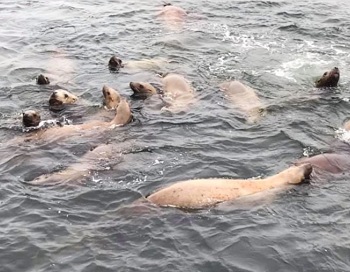
FurCanada open house will kickstart campaigns for a seal, sea lion and sea otter commercial fishery in British Columbia
The fur is set to fly in Nanaimo this weekend, with an open house to kickstart campaigns for a seal, sea lion and sea otter commercial fishery in British Columbia. FurCanada, a Vancouver Island company, hopes the event on Dec. 14, will raise awareness about the overpopulation of seal and sea lions which are decimating B.C.’s endangered and threatened chinook salmon stocks. Thomas Sewid, who is President of Pacific Balance Marine Management, which is the organization leading the development of the seal, sea lion and sea otter industry estimates that of the 27 million chinook smolts produced a year in the Salish Sea (wild and hatchery) the pinnipeds are consuming about 24 million of them. >click to read< 19:53
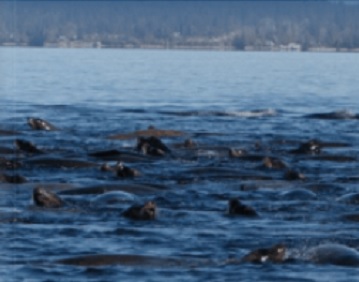
Sea Lions, Other Marine Mammals Discovering South Sound Anchovy Boom
A large suite of marine mammals has discovered Deep South Sound’s new bounty of anchovies, schools of which are now so numerous they’re routinely observed during regular aerial surveys. For three months this past winter, WDFW biologist Steve Jeffries observed hundreds of California sea lions, as well as harbor seals, harbor porpoises and long-beaked common dolphins feeding on a massive pod of the skinny, silvery baitfish in Case Inlet north of Olympia. Anchovy populations have boomed in these waters since 2015 and the Blob’s warm waters. What’s more, the pinnipeds and cetaceans appeared to be teaming up on them. >click to read<20:01
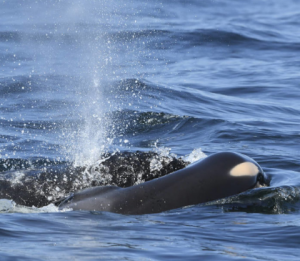
Pinnipeds, not commercial fishing, depriving Orca of salmon
The plight of the orcas has caught the attention of government leaders after a mother orca was spotted carrying her dead baby for nine days in a row; Tom Nelson of 710 ESPN’s “Outdoor Line” podcast has a few ideas for how the state can help save them. Nelson explains that, unlike other types of orca that feast on pinnipeds such as seals and sea lions, the Southern Resident Killer Whales rely on eating salmon to survive. The grieving mother belongs to the Southern Resident pod. There are not enough salmon being produced at hatcheries to feed the Orca in the Puget Sound, Nelson explained, and increasing development has destroyed the salmons’ homes. “That has put a pinch on the diet of these Southern Resident Killer Whale Orcas, >click to read<16:44




































